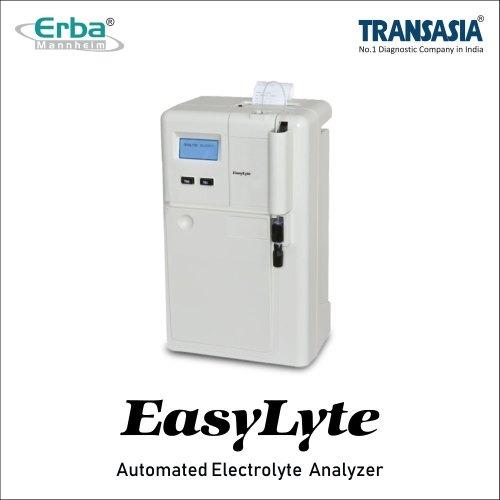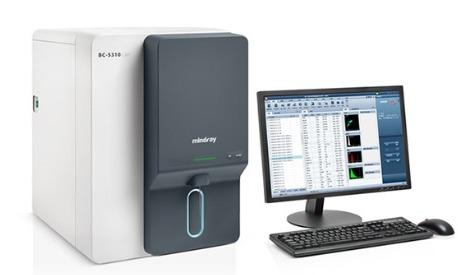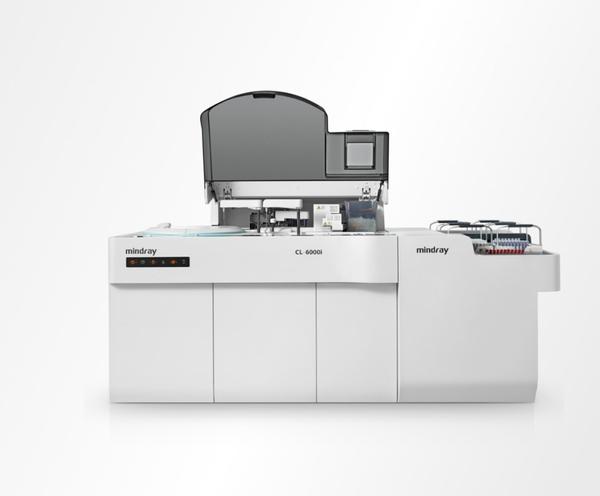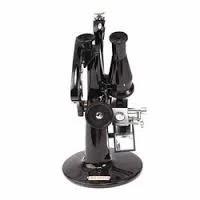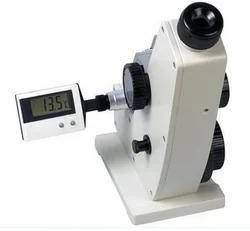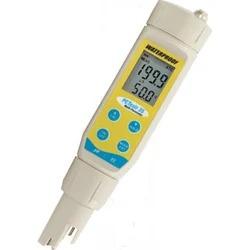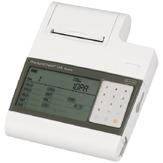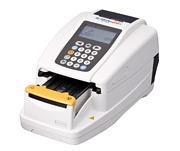Product Description: Medica Corporation’s EasyLyte® analyzer is a completely automated, microprocessor-controlled electrolyte system that uses ISE (Ion Selective Electrode) technology to make electrolyte measurements. The EasyLyte measures combinations of Na+, K+, in whole blood, serum, plasma, or urine. EasyLyte incorporates state-of-the-art electronics and an innovative ergonomic design that differentiates it significantly from competitors. The analyzer also stores quality-control data that is easily accessible. Patient histories are immediately retrievable for evaluation. EasyLyte analyzers combine simple yes/no prompted operation, low maintenance, and high reliability into one economical design. Product Features: EasyLyte is Easy to Use, Easy to Operate, Easy to Maintain The entire menu is driven by 2 simple buttons Results are displayed on LCD screen as well as printouts EasyLyte does 2 point as well as 1 point calibration Facility to analyze different type of samples: whole blood, serum, plasma ,urine samples EasyLyte has capillary and syringe sampling facility EasyLyte has auto probe wiping facility Analysis of electrolytes is done using 100ul of blood and 400ul of diluted urine Rate of analysis 55 secs per sample Analyzer is capable of storing 128 patients data with trilevel QC results Analyzer has modular plug in reagent pack system EasyLyte has facility for auto calibrations with a programmed interval of 4 hrs and also calibration on demand Analyzer has facility to upgrade to a walk away Electrolyte station by use of Auto Sampler It has a built in thermal printer and a RS 232 port for interfacing Product Applications: Sodium - Na, Potassium - K CLIA Classification: Moderate Complexity Sample Type: Whole Blood, Serum, Plasma or Urine Sample Size: 100 µL Whole Blood, Serum, Plasma, 60 µL capillary or 400 µL diluted (1:10) Urine Method: Direct measurement by Ion Selective Electrode (ISE) Measurement Range: Blood Urine Na+: 20 – 200 mmol/L Na+: 25 – 1000 mmol/L K+: 0.2 – 40 mmol/L K+: 1.0 – 500 mmol/L Cl-: 25 – 200 mmol/L Cl-: 25 – 500 mmol/L Li+: 0.2 – 5.0 mmol/L Ca++: 0.1 – 6.0 mmol/L pH: 6.0 - 8.0 Units Display Resolution: Na+: 0.1 mmol/L K+: 0.01 mmol/L Cl- : 0.1 mmol/L Li+: 0.01 mmol/L Ca++: 0.01 mmol/L pH: 0.005 units Test Time: Na/K Na/K/Cl Na/K/Li Na/K/Cl/Ca Analysis time (blood) 55 sec 55 sec 55 sec 60 sec Urine mode Yes Yes Yes No Analysis time (urine) 90 sec 90 sec 90 sec N/A EasySampler Yes Yes Yes No Capillary Samples Yes Yes Yes No Data Storage: Patient Results: up to 128 samples QC Results: up to 20 each Normal, Low, and High Calibration: Automatic or On-Demand Output: 128 x 64 pixel graphic display 24 column thermal printer Serial port (RS-232), EasySampler port Ambient Conditions: 15–32oC (60–90oF), <85% humidity Power: 100-240 VAC 50/60 Hz, 0.8A Size & Weight: 9.5”W x 16.5”H x 8.0”D (24 cm W x 42 cm H x 20 cm D) 13 lbs. (5.8 kg) Reagents used with this 'EasyLyte' CLIA Classification: Moderate Complexity Sample Type: Whole Blood, Serum, Plasma or Urine Sample Size: 100 µL Whole Blood, Serum, Plasma, 60 µL capillary or 400 µL diluted (1:10) Urine Method: Direct measurement by Ion Selective Electrode (ISE) Measurement Range: Blood Urine Na+: 20 – 200 mmol/L Na+: 25 – 1000 mmol/L K+: 0.2 – 40 mmol/L K+: 1.0 – 500 mmol/L Cl-: 25 – 200 mmol/L Cl-: 25 – 500 mmol/L Li+: 0.2 – 5.0 mmol/L Ca++: 0.1 – 6.0 mmol/L pH: 6.0 - 8.0 Units Display Resolution: Na+: 0.1 mmol/L K+: 0.01 mmol/L Cl- : 0.1 mmol/L Li+: 0.01 mmol/L Ca++: 0.01 mmol/L pH: 0.005 units Test Time: Na/K Na/K/Cl Na/K/Li Na/K/Cl/Ca Analysis time (blood) 55 sec 55 sec 55 sec 60 sec Urine mode Yes Yes Yes No Analysis time (urine) 90 sec 90 sec 90 sec N/A EasySampler Yes Yes Yes No Capillary Samples Yes Yes Yes No Data Storage: Patient Results: up to 128 samples QC Results: up to 20 each Normal, Low, and High Calibration: Automatic or On-Demand Output: 128 x 64 pixel graphic display 24 column thermal printer Serial port (RS-232), EasySampler port Ambient Conditions: 15–32oC (60–90oF), <85% humidity Power: 100-240 VAC 50/60 Hz, 0.8A Size & Weight: 9.5”W x 16.5”H x 8.0”D (24 cm W x 42 cm H x 20 cm D) 13 lbs. (5.8 kg)
Send Message